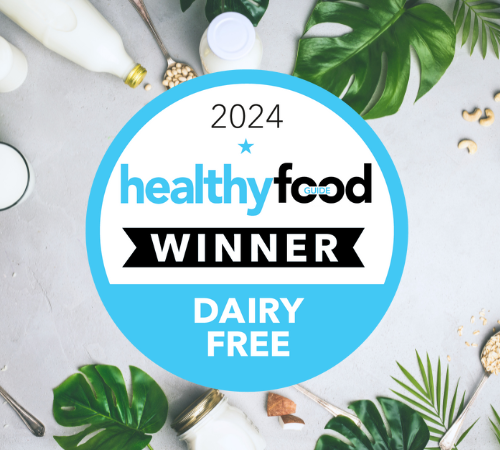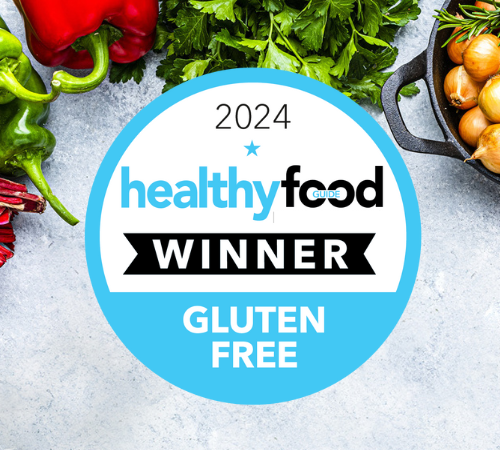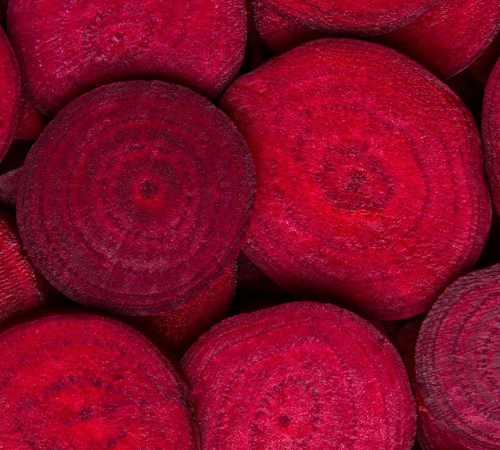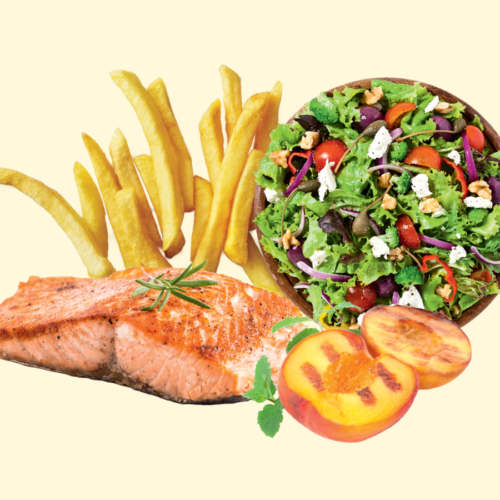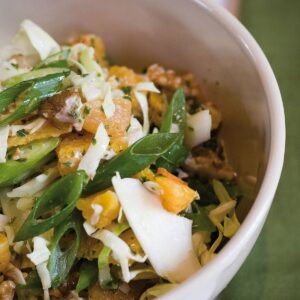
If it’s in the health food aisle, it’s healthy, right? Not necessarily, as dietitian Melissa Meier explains.
Marketing buzzwords, such as ‘natural’, ‘organic’ and ‘no refined sugar’, make it easy to yield to the subtle allure of the health food aisle. The truth is, however, many products in the health food aisle can contain just as much sugar, sodium and kilojoules as those in the regular aisles – except they usually come with a heftier price tag.
It’s not all bad news, though. Some packaged products are convenient and nutritious. You just need to know what to look for and what to leave behind. Let’s take a walk down the health food aisle and check it out.
‘Free-from’ products
Free-from products are foods that claim on their packaging to not contain certain components such as gluten, wheat or dairy. These products are useful for those who have been diagnosed with allergies or intolerances, or with medical conditions such as coeliac disease.
In fact, spotting gluten-free or low-FODMAP products has never been easier, thanks to the gluten-free ‘crossed grain’ and the ‘FODMAP friendly’ logos (see below). Keep an eye out for these, next time you shop.
Free-from labels, however, do not automatically make products healthier. After all, a biscuit is still a biscuit, gluten free or not. You might be surprised to learn some free-from products are actually higher in added fat and sugar and lack gut-healthy fibre compared with regular versions, as they often make use of more refined ingredients.
Nut and seed spreads
Nut and seed spreads are a group of nutritional superstars that provide gut-loving fibre, protein to help build muscle and heart-healthy fats.
One thing to watch out for is spreads that have added sugar and fat. And, while a small amount of salt can enhance flavour, some have too much sodium. Read the ingredients list and find a spread that’s either 100 per cent nuts or seeds or, if it has added salt, has 250mg sodium per 100g or less.
Peanut butter usually grabs the limelight in the world of nut butters, but rising stars include almond and cashew spreads. Another hero to look for in the health food aisle is tahini, a paste made from ground sesame seeds and a central ingredient in hummus.
Unprocessed nuts, seeds and grains
Now we’re talking! Unprocessed nuts and seeds offer some real nutritional perks. They’re packed with protein to keep you feeling full, fibre for a healthy gut and healthy fats to support your heart.
Opt for unsalted varieties and you’re onto a winner. A great idea is to buy the nuts in bulk packs then divide them into 30g portions in reusable containers to snack on.
Grains are also vital for overall health, their smart carbs give lasting energy and lots of micronutrients. In the health food aisle, you’ll find some more exotic varieties, such as quinoa, buckwheat and teff, but don’t be fooled into thinking these trendy versions are superior to the mainstream (and more affordable) options such as rolled oats, brown rice or wholemeal pasta.
Our advice is to mix it up. Breakfast on a bowl of oats or muesli, add cooked quinoa to lunchtime salads and serve brown rice with a vege-packed curry for dinner.
Organic versus regular
When you enter the health food aisle, you’re likely to see product after product spruiking their organic credentials, from breakfast cereals through to bags of corn chips.
There are many reasons you may choose to buy organic but, remember, there’s little nutritional difference between organic and conventional produce.
If your personal preference is to buy organic, look for foods carrying a certification mark from a reputable organisation, it’s the only way you can be sure you’re getting what you pay for.
Wallet workout
Have you ever noticed staples such as breakfast cereals, nuts and grains in the health food aisle can be more expensive than equivalent products elsewhere?
Compare prices to make sure you’re not paying a premium.
Limit these
These foods belong outside the health food aisle:
Processed snacks
Whether they’re in the health food aisle or not, processed foods are usually high in sodium and sugar and lack important fibre. Think of chips, biscuits and most snack bars as occasional treats rather than everyday staples.
Superfood supplements
Cacao, matcha tea and acai are just some of the new powders that promise everything from weight loss to glowing skin, but the jury’s very much out. Whole foods such as fruit and veges are an evidence-based vitamin and mineral fix.
Vege chips
While the name can be deceiving, vege chips often arrive in the health aisle high in salt and kilojoules, just like regular old potato chips. They are certainly not a replacement for vegetables. Check the label, choose the brand that’s lowest in sodium and enjoy them as an occasional treat.
Protein bars and shakes
Protein is vital for muscle growth and development, but most of us don’t actually need more protein. If you’re elderly, ill or an elite athlete, you do need higher amounts of protein, but you can still usually get enough from whole or minimally processed foods such as eggs, meat, fish, legumes and dairy.
Coconut oil
This trendy oil is over 90 per cent saturated fat and eating too much of this type of fat can raise your level of LDL, or ‘bad’, cholesterol. The scientific evidence does not support the use of coconut oil in place of other cooking oils and it doesn’t begin to compete with the star quality of extra virgin olive oil.
Try these
Next time you’re perusing the supermarket shelves, consider adding one of these nutritional stars to your basket:
Chia seeds
They might be small, but they are brimming with fibre and omega-3 fats.
How to use them: Whip up a chia pudding with fruit and milk, mix a teaspoon with your yoghurt at breakfast or sprinkle seeds over a salad.
Quinoa
This pseudo grain (from a flowering plant rather than a grass) is gluten free, relatively high in protein and fibre and has a low glycaemic index. It’s riding a wave at present.
How to use it: Try it in place of rice or couscous or to help bulk up homemade fritters and frittatas.
Tahini
Made from ground sesame seeds, tahini is also a source of good fats, protein and gut-friendly fibre.
How to use it: Whisk it into a salad dressing with yoghurt and lemon juice or drizzle it over toast.
Psyllium husks
These are rich in beta-glucan, a type of fibre that works to help lower your cholesterol.
How to use them: Sprinkle them over your morning cereal or add them to baked goods such as muffins.
LSA
A combination of ground linseeds, sunflower seeds and almonds, LSA offers protein, fibre and healthy fats.
How to use it: Blend it into smoothies or enjoy it as a crunchy topping for yoghurt.
www.healthyfood.com



